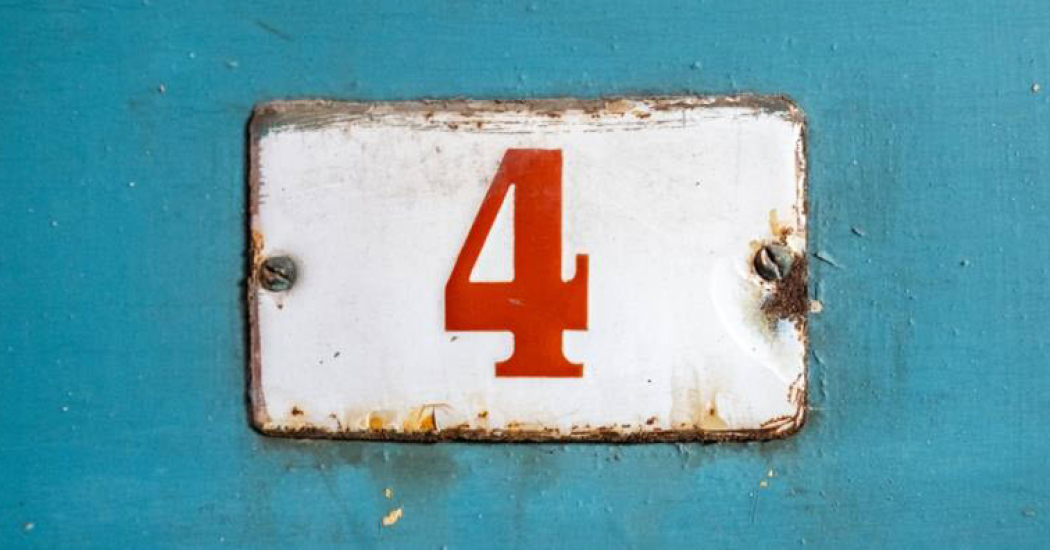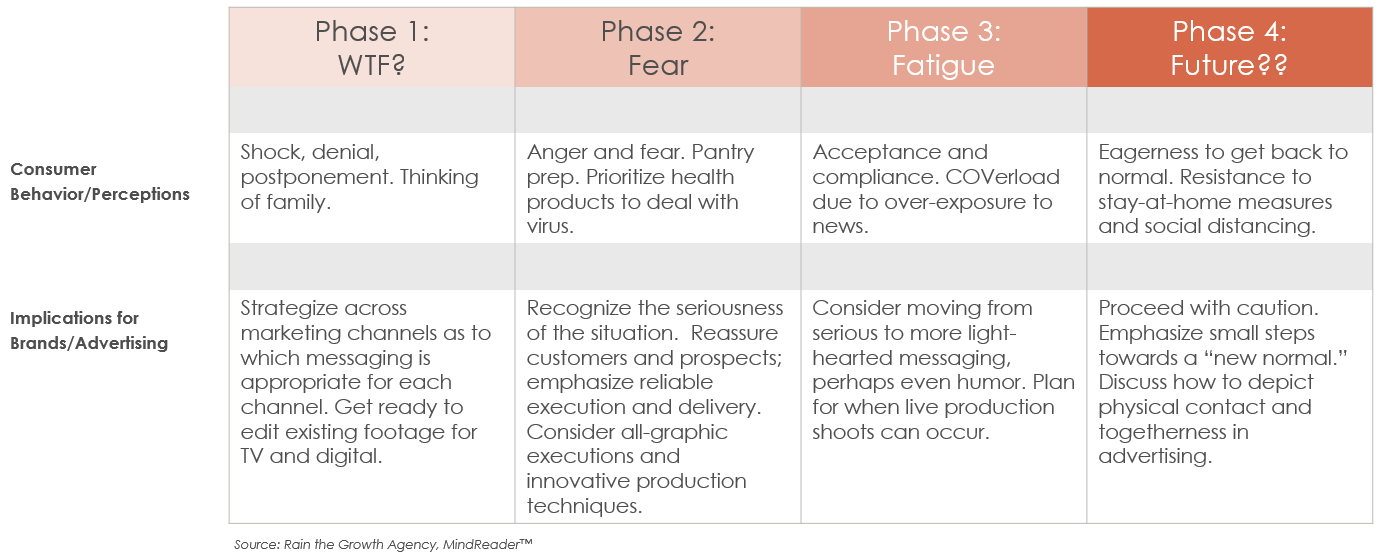Research on the phases of COVID-19: The 4 F’s

Two waves of quantitative research fielded in late March and mid-April indicate that there are four phases to the COVID-19 crisis.
- WTF? — What is this and how will it affect my family and me?
- Fear – Realization of the seriousness of the virus drives compliance and efforts to flatten the curve. At least in most parts of the country.
- Fatigue – After five full weeks of confinement and full on, 24/7 COVID-19 media coverage, people are getting tired of hearing about the virus and some people begin to push back via non-compliant behavior.
- Future? — Uncertain Future where people are anxious to get back to work and want a different letter “F”, as in Freedom. Continued constraints on behavior in this phase will rally Americans around the concept of Freedom and could drive blatantly bad behavior as it relates to COVID-19 social-distancing compliance and attitudes towards re-starting the economy.

Four phases of COVID-19
With more than half of Gen Z, Millennials and Gen X reporting that they are tired of hearing about COVID-19, the MindReader data indicates we are in the Fatigue phase. There are, however, some early indications of the Future phase given the protests in Michigan, Ohio, and Texas.
These four phases of COVID-19 generally follow the four phases of coping—Shock, Anger, Resistance and Acceptance—with one exception: people seemingly Accepted COVID-19 after Shock and Anger, but are now beginning to Resist the restrictions on behavior—particularly when spring time weather is so alluring.
Key Takeways
- We’ve monitored consumer receptivity for advertising in general during COVID-19 and in particular, their capacity for humorous ads, and it appears that consumers are not only receptive to advertising during this time, but given the Fatigue and COVerload, people may now be ready for some humor.
- Given the recent surge in unemployment, there may be newfound appreciation for business overall and the critical role that brands play in the economy and in our re-energized, shelter-at-home TV culture. In fact, it may be reassuring and somewhat comforting for people to see advertising during this time as long as it is not too heavy-handed when it comes to COVID-19 references and does not include awkward social-distancing situations.
- As many people at home innovate their behavior to cope with COVID-19, it may actually be a good time for Challenger brands. With 60 percent of Millennials and Gen Xers open to trying new brands, Challenger brands may see more trial in time when people are willing to change their perceptions and behavior in a “new normal.”
- As brands move into the Future phase, advertisers may need to segue from serious, reassuring messaging to more positive and upbeat advertising that telegraphs the light at the end of COVID-19 tunnel but emphasizes restraint and small steps in behavioral change.
*The two surveys were conducted via MindReader, the agency’s proprietary online research platform. Each wave of research consisted of 750 respondents across four generations fielded according to U.S. representation across ethnicity and U.S. region. The first MindReader wave was in field March 25-26 and the second conducted April 13-14.
